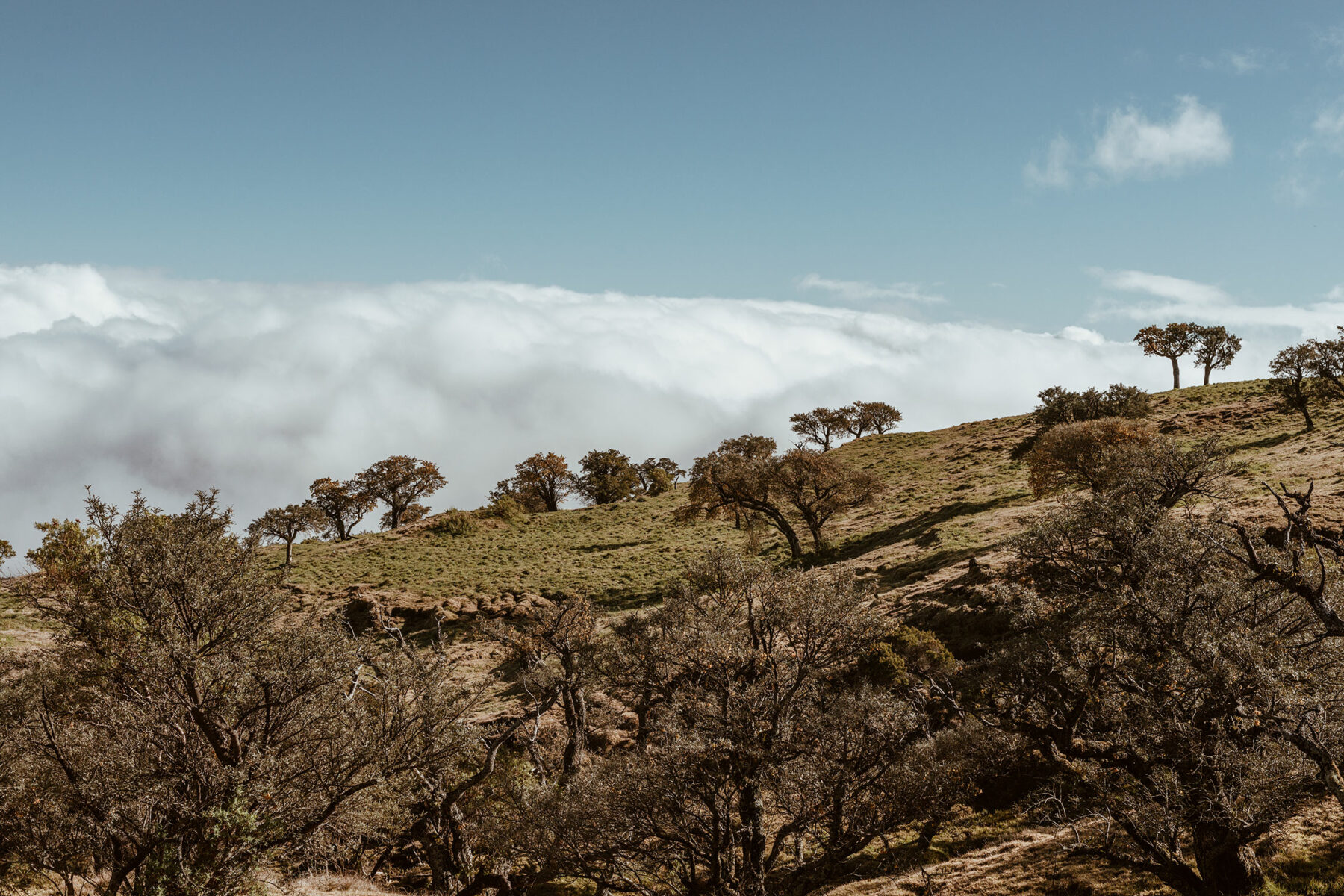Breathtaking beaches, spectacular natural scenery, rocky volcanic landscapes, Creole delicacies, and a veritable mix of cultures: at around 2,500 square kilometers, Île de la Réunion is a truly exotic part of France and a somewhat remote corner of the Eurozone.
An eleven-and-a-half-hour flight from Paris to the middle of the Indian Ocean, this island to the east of Madagascar, only a stone’s throw away from Mauritius, proves to be a genuine paradise for active tourists and nature lovers.
Congestion in Saint-Denis. Traffic is at a standstill on the coast road that winds its way around the island from the Île de la Réunion airport, tightly hugging the rocky cliffs in the bustling capital. Rolande Bois remains calm, however. The ever-cheerful Madagascan, who has lived on Réunion for several years, has long since grown accustomed to the local traffic conditions. “There’s only one road to get from A to B,” she says, shrugging her shoulders—or none at all.
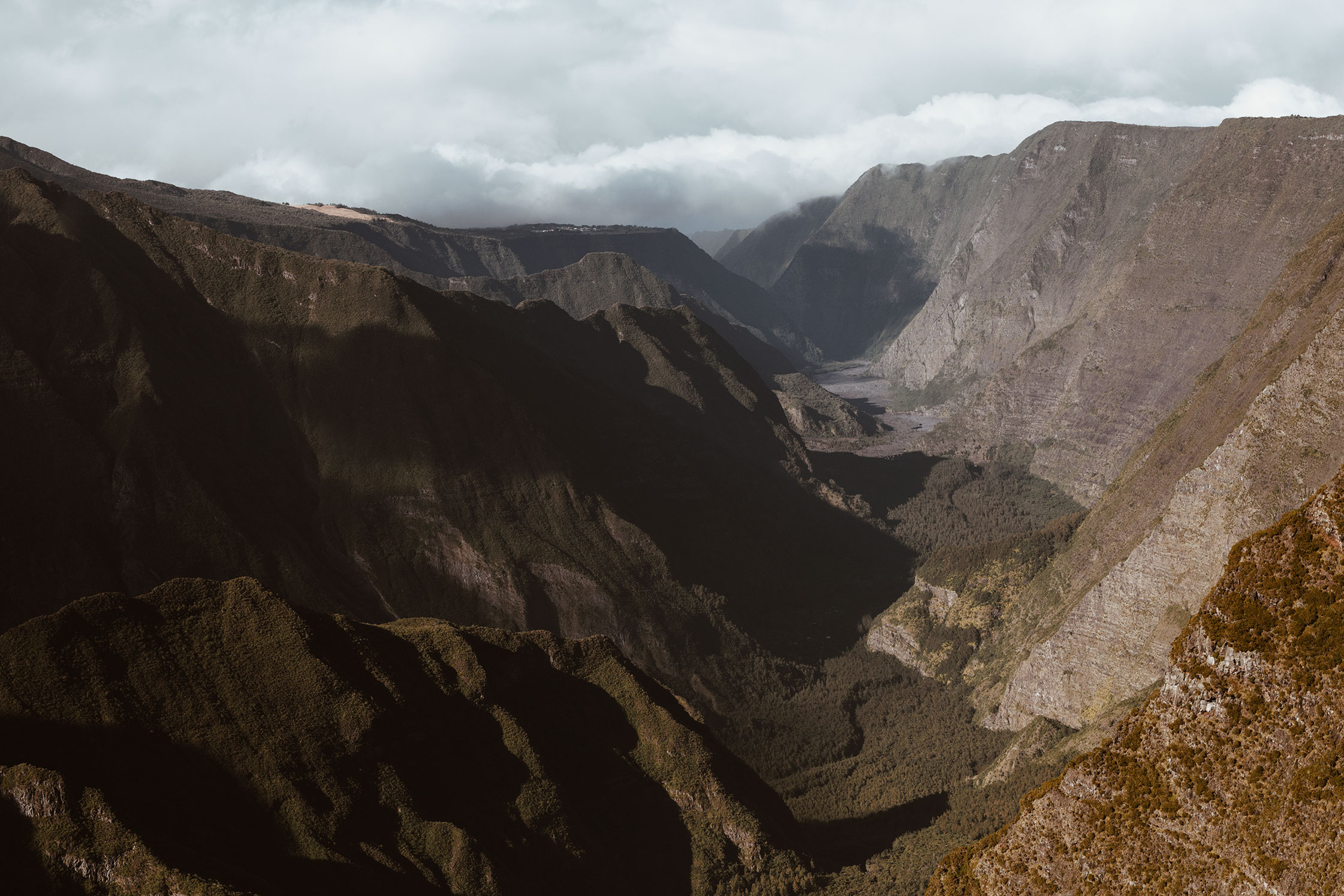
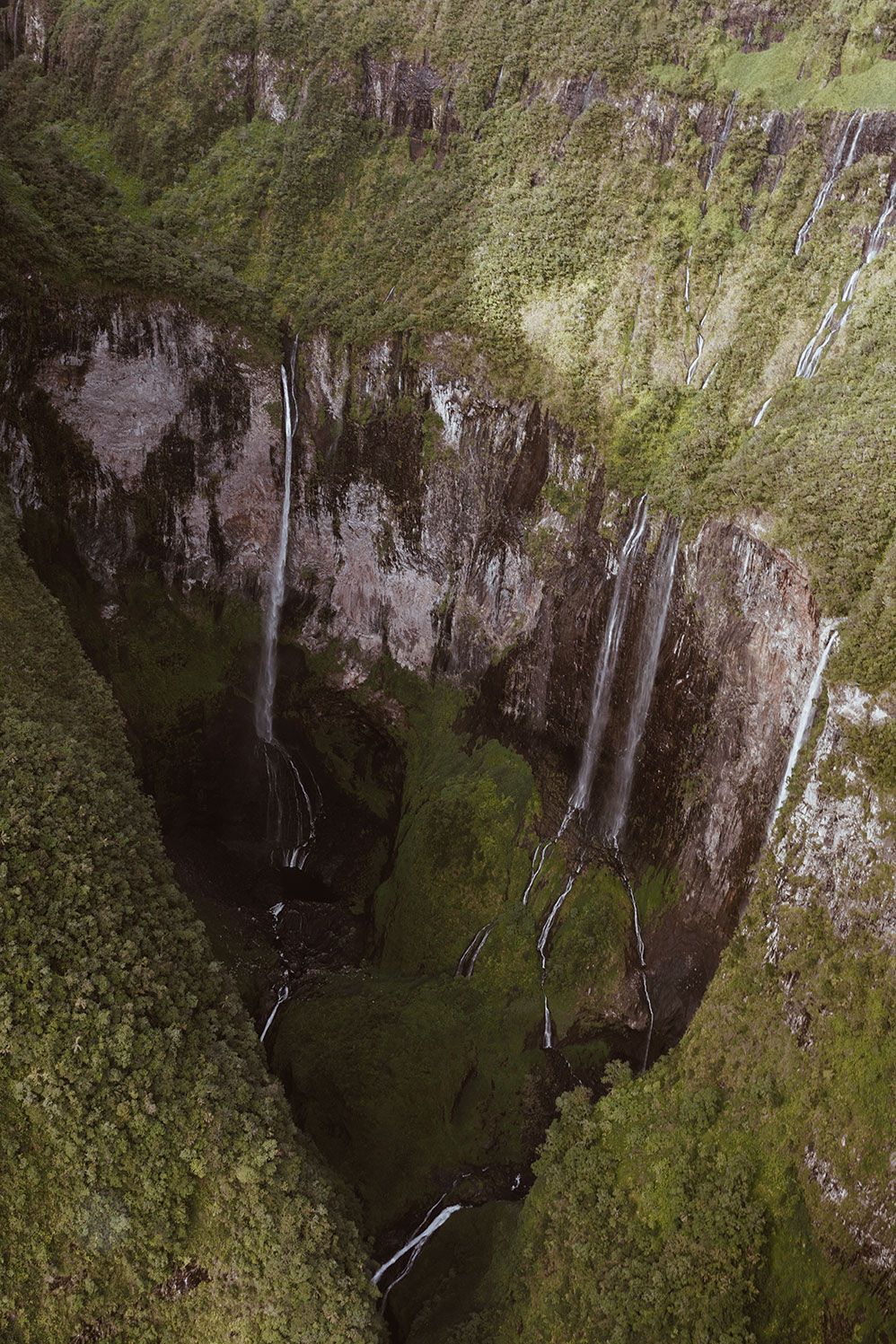
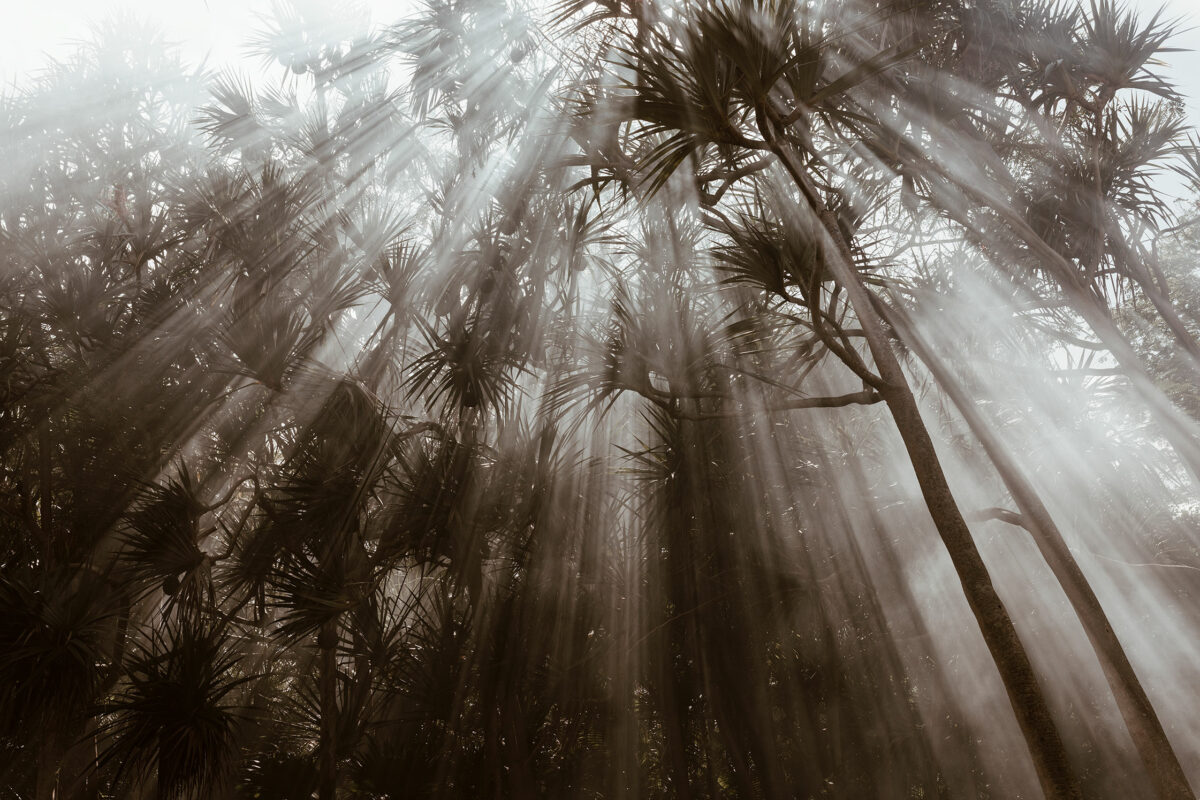
As well as the long-extinct Piton des Neiges, whose white peaks rise over 3,000 meters into the sky, the spluttering giant Piton de la Fournaise, one of the world’s most active volcanoes, is another feature of this volcanic island. “It erupts around once a year,” says Rolande, “and has already done so three times this year.” With every major eruption, lava flows into the sea in some places. It then takes days for the fiery mass to cool down so that the reconstruction of the submerged road can begin. “We literally burn money on a regular basis with our road,” says Rolande, laughing.
The plan is to counter this sporadic, pre-programmed traffic jam with a new route out at sea—a kind of vehicular bridge that will circumnavigate parts of the island. But its construction is costly. Once this major European Union-subsidised project is complete, it will be France’s most expensive road—in the middle of the Indian Ocean. After all, as a French overseas department, Réunion is officially one of the eighteen regions of the country. It remains to be seen how many more eruptions there will be until this stilted icon is finished. Because: “Things proceed at a much slower pace on Réunion,” according to Rolande.
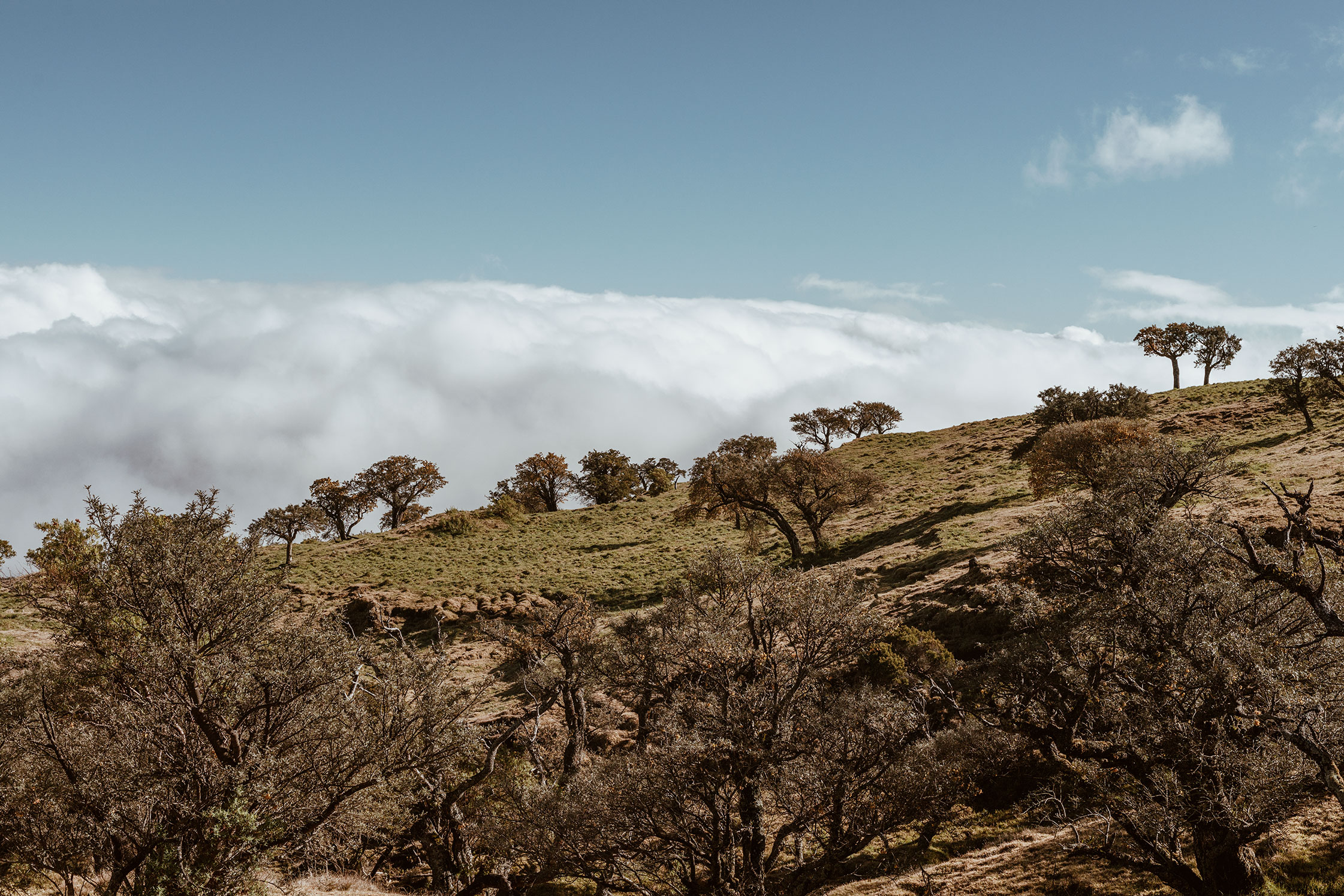
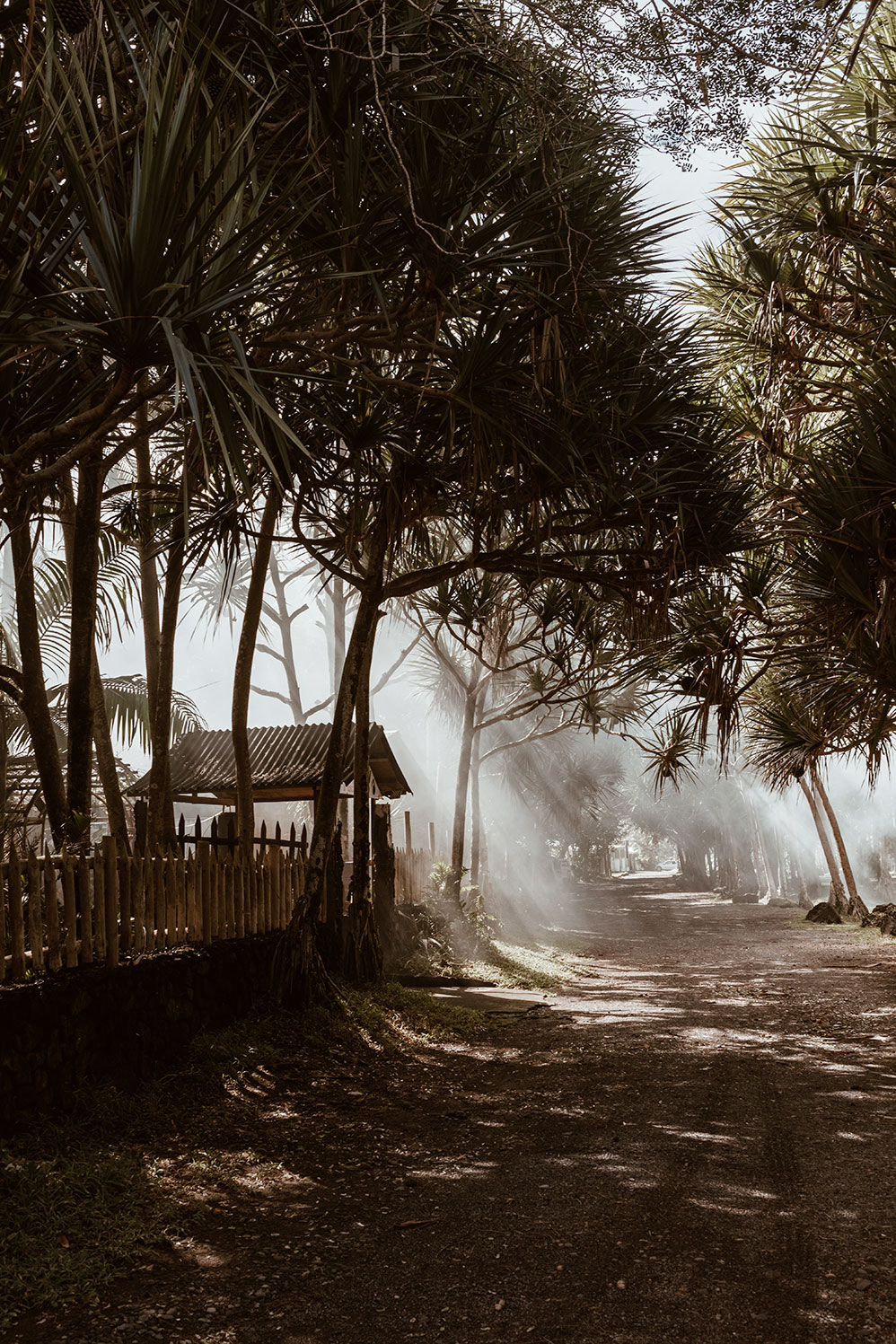
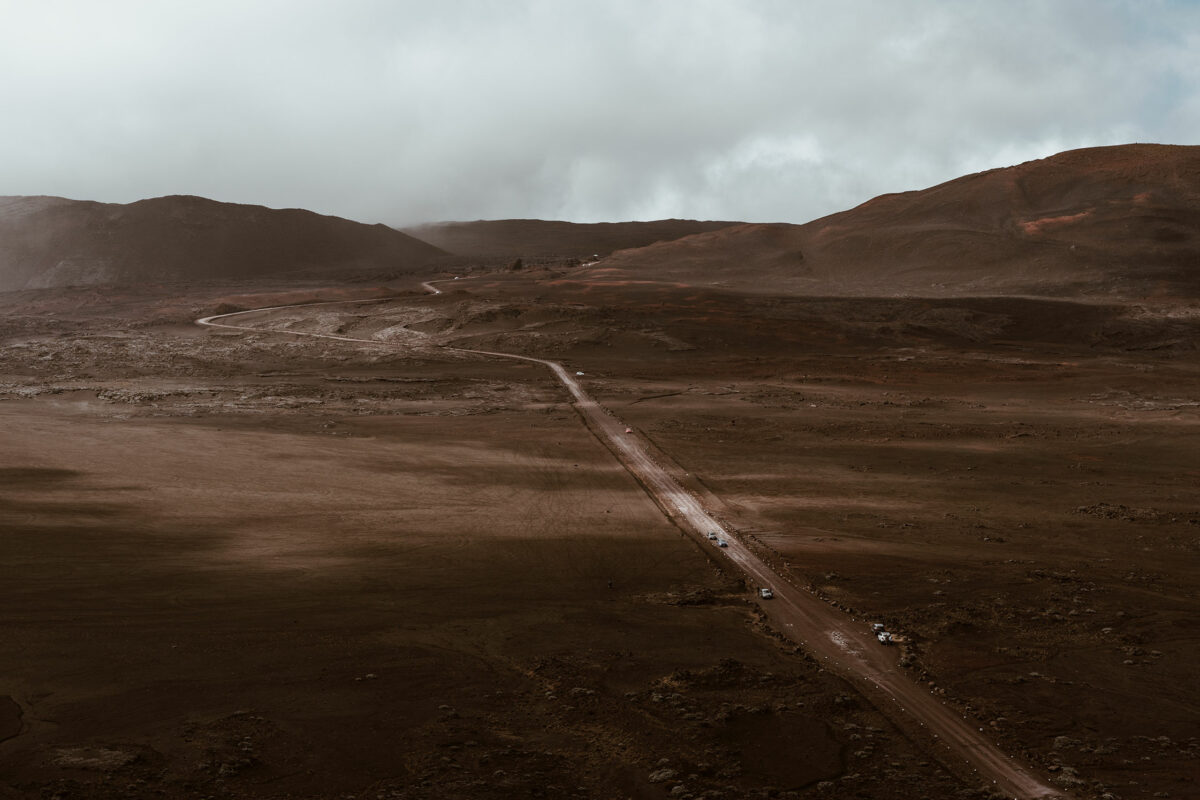
So it’s kind of odd that, despite its laid-back vibe, Réunion is considered to be a genuine adventure and action island. Of course, you can relax on the beach and enjoy a swim while keeping an eye out for the sharks that frolic off the island in the same numbers as whales, or dive into the magnificently sparkling coral reef. Nevertheless, Réunion mainly attracts nature lovers and active tourists who set off on hikes, which can last several days, in any one of its three green valleys—Cilaos, Mafate, and Salazie—and on climbing tours in almost untouched areas. The lush green landscapes are literally encircled by volcanoes, with Mafate in particular only accessible on foot or by helicopter, making it an unspoiled corner of paradise.
In general, Réunion’s volcanic landscape makes it difficult to access, which is another reason why the originally uninhabited island remained unpopulated long after its discovery. “It’s said that the first sailors to come this way believed Réunion to be the island of dragons due to its active volcanoes—preferring to steer well clear of the fire-breathing monsters,” says Rolande, laughing. The island was only populated from the mid-17th century, when the French arrived looking to expand their colonies. Along with the French, the first settlers were slaves deported from Madagascar, Eastern Africa, and India who worked on the sugar cane and vanilla plantations on the island then known as Île Bourbon—a name taken from the French Royal House of Bourbon, which also gave the vanilla of Réunion its name.
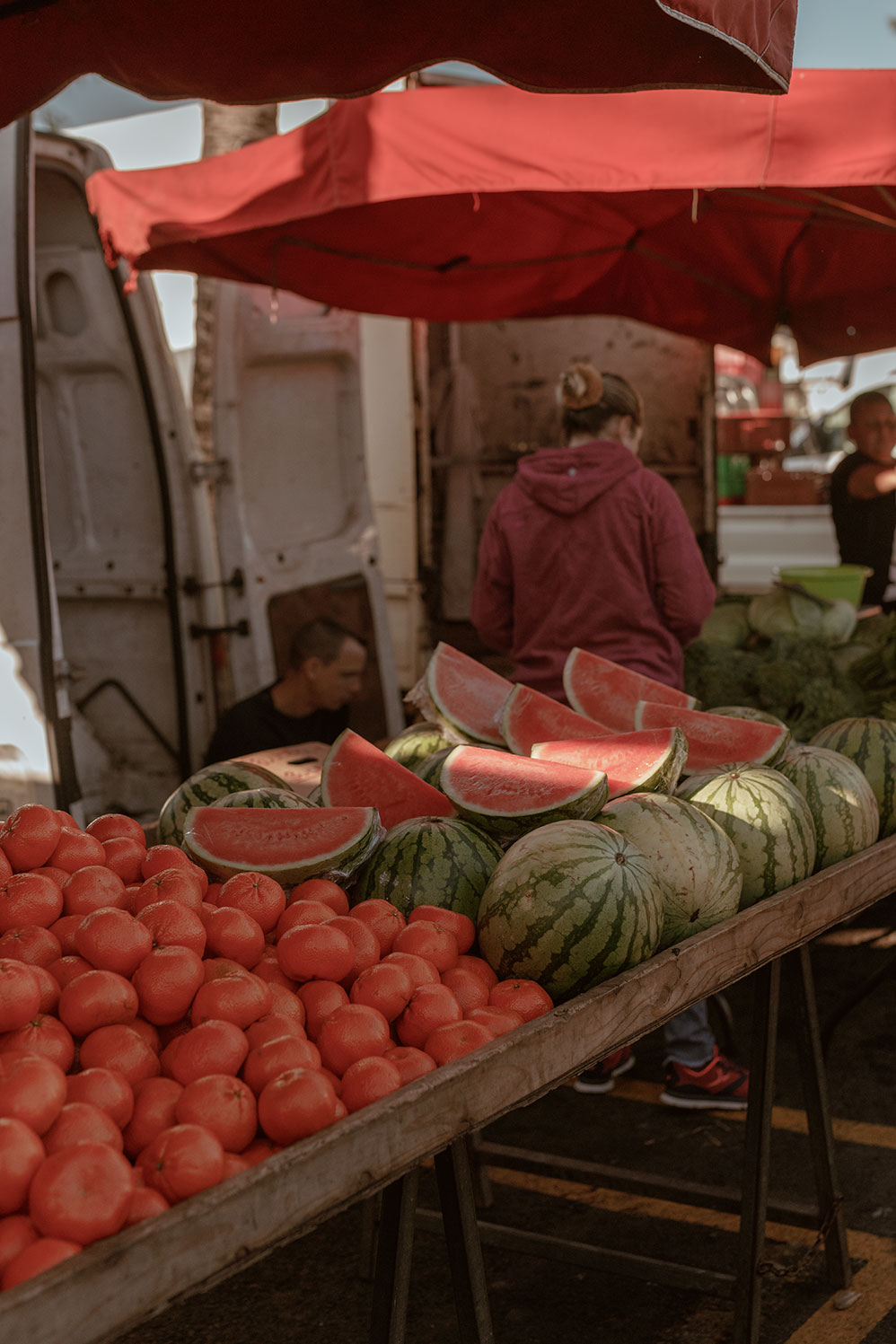
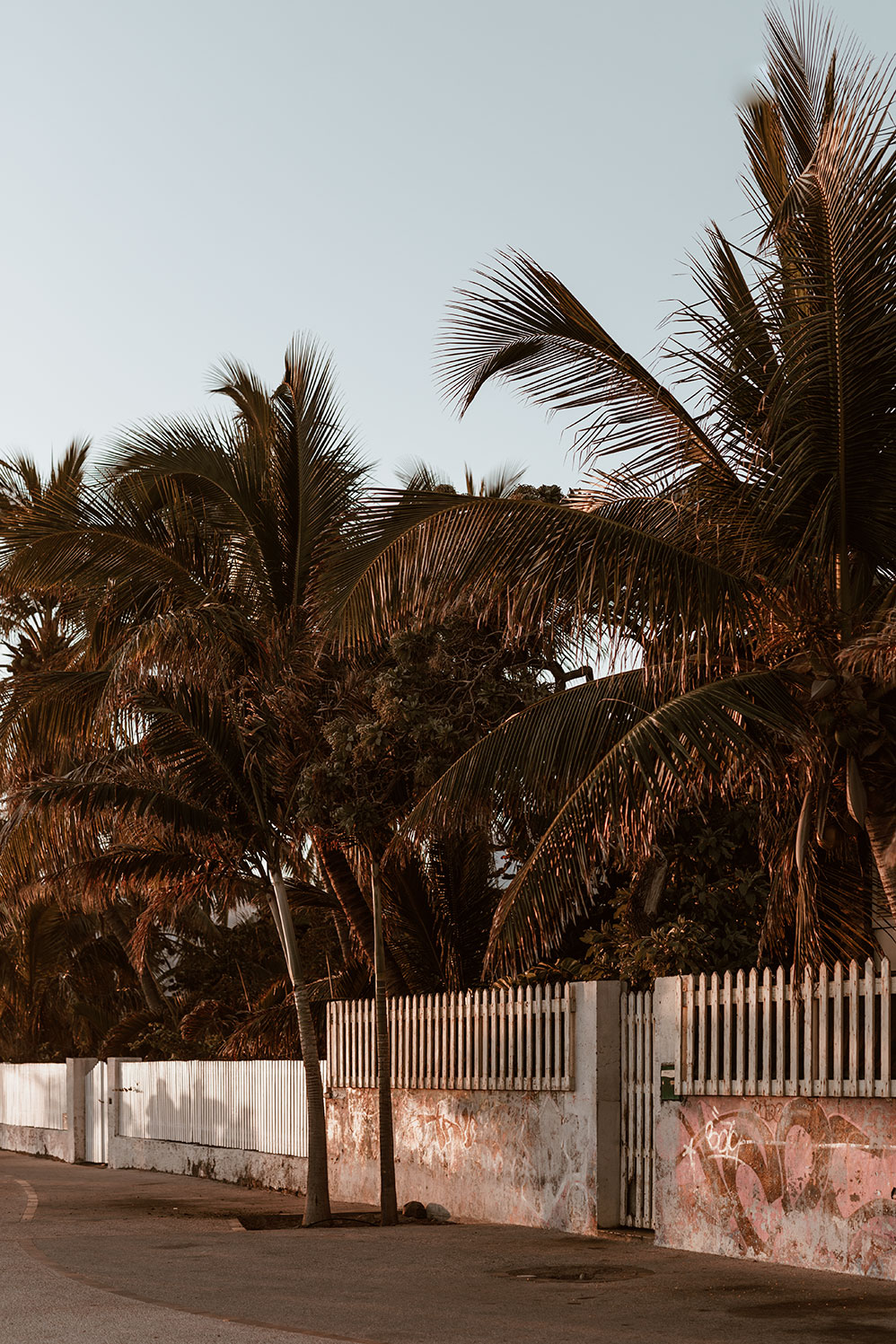
Slavery was officially abolished in 1848. After that, additional cheap labor came from India, parts of Africa, and China. Today’s descendants of these former settlers are known as Creoles—the French-based Creole language is also spoken on Réunion, by the way—and the island is still shaped by a variety of cultures. The harmonious coexistence of different groups is an important part of the national identity. Rolande says: “Muslims, Christians, Hindus, Buddhists: on Réunion, we’re proud of our peaceful diversity.”
It is a diversity reflected in the extraordinary flavors of Réunion’s Creole cuisine. Samosas— stuffed, deep-fried pasties from India—are considered to be the ultimate snack and can be purchased on every street corner. “Curry comes from the Tamils, and stew from our African ancestors,” explains Jean François Rivière from the Creole restaurant Le Vieux Bardeau that is housed in an old colonial-style villa. “Everything has fused together to produce our distinctive Réunion cuisine.”
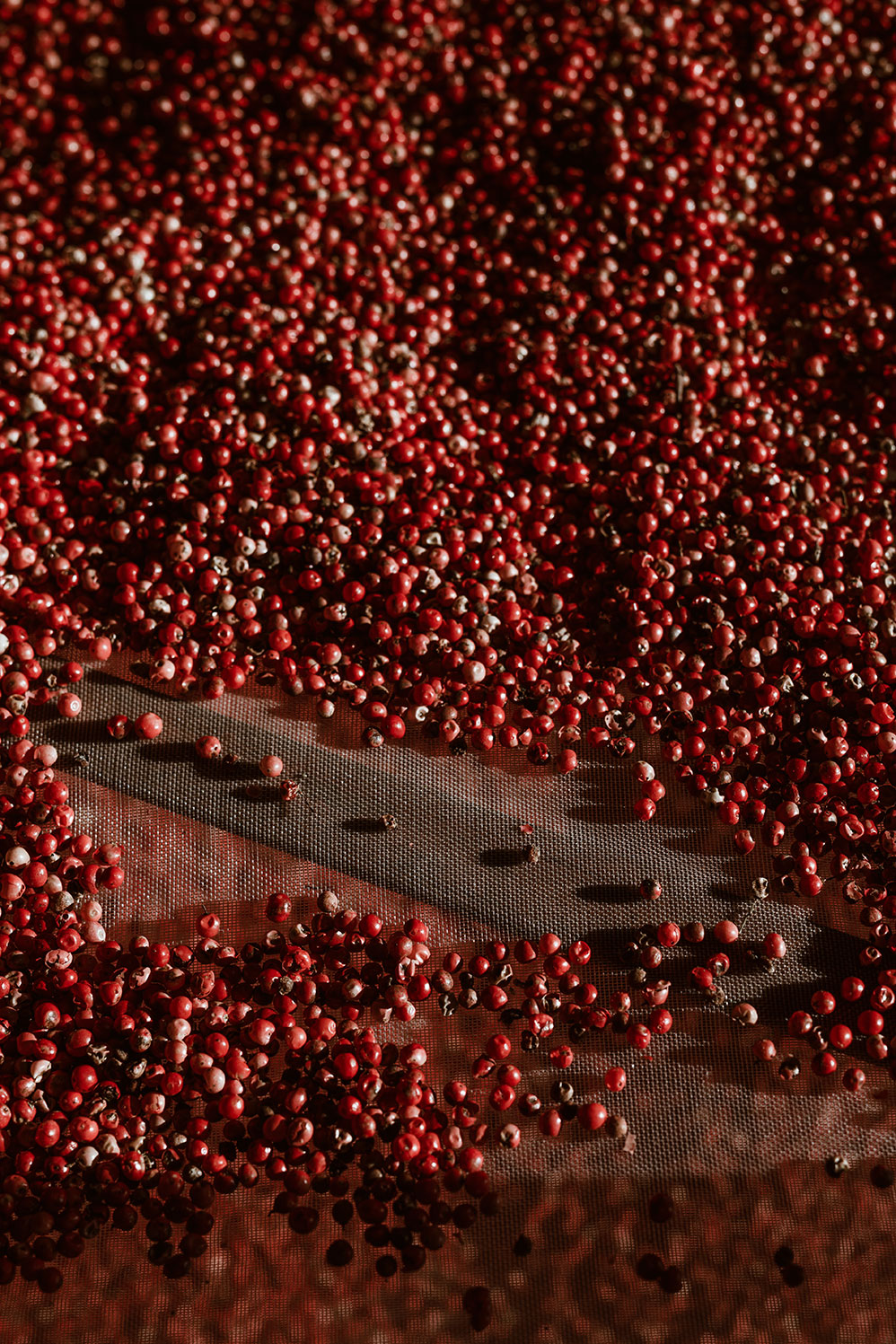
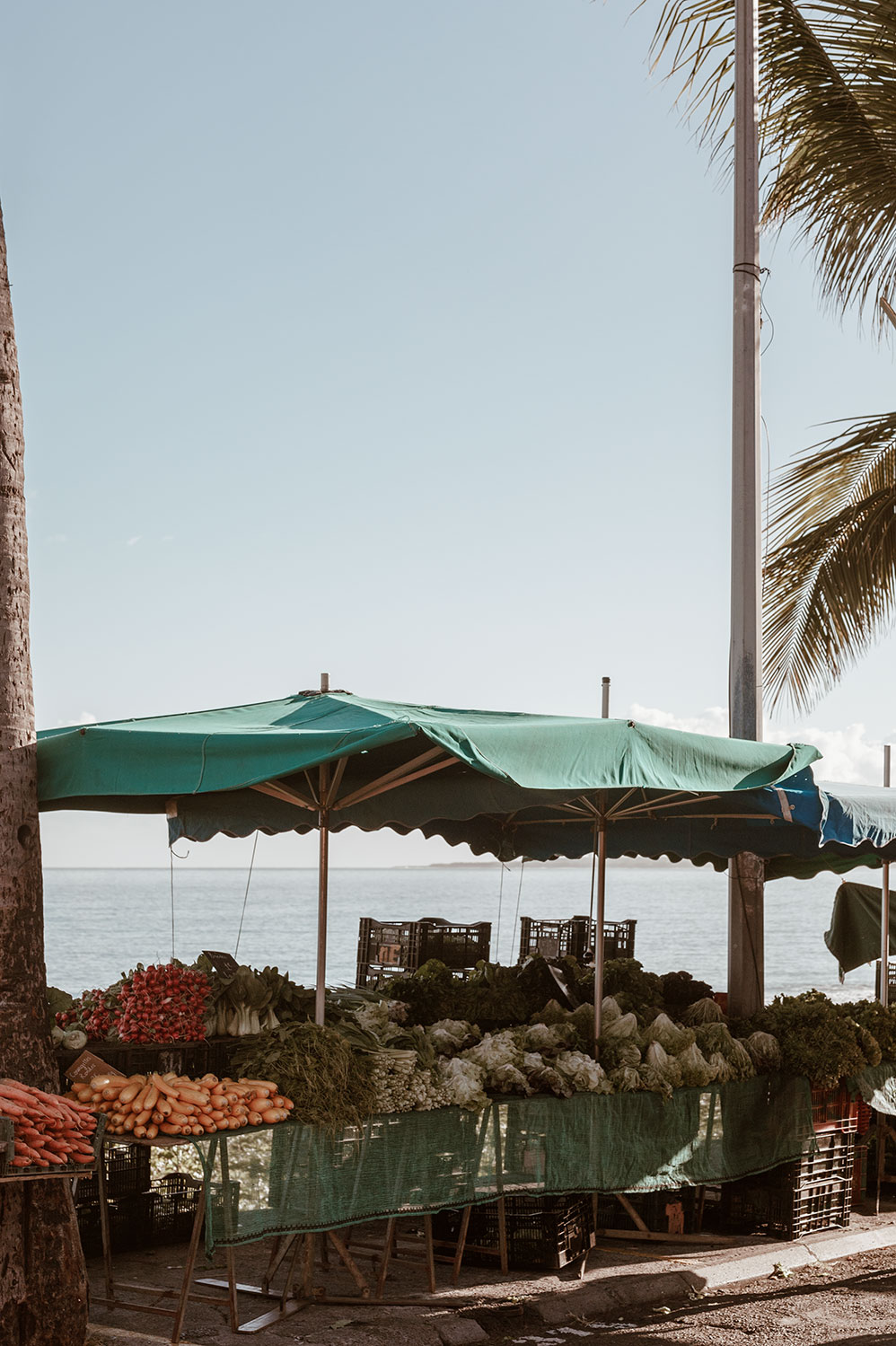
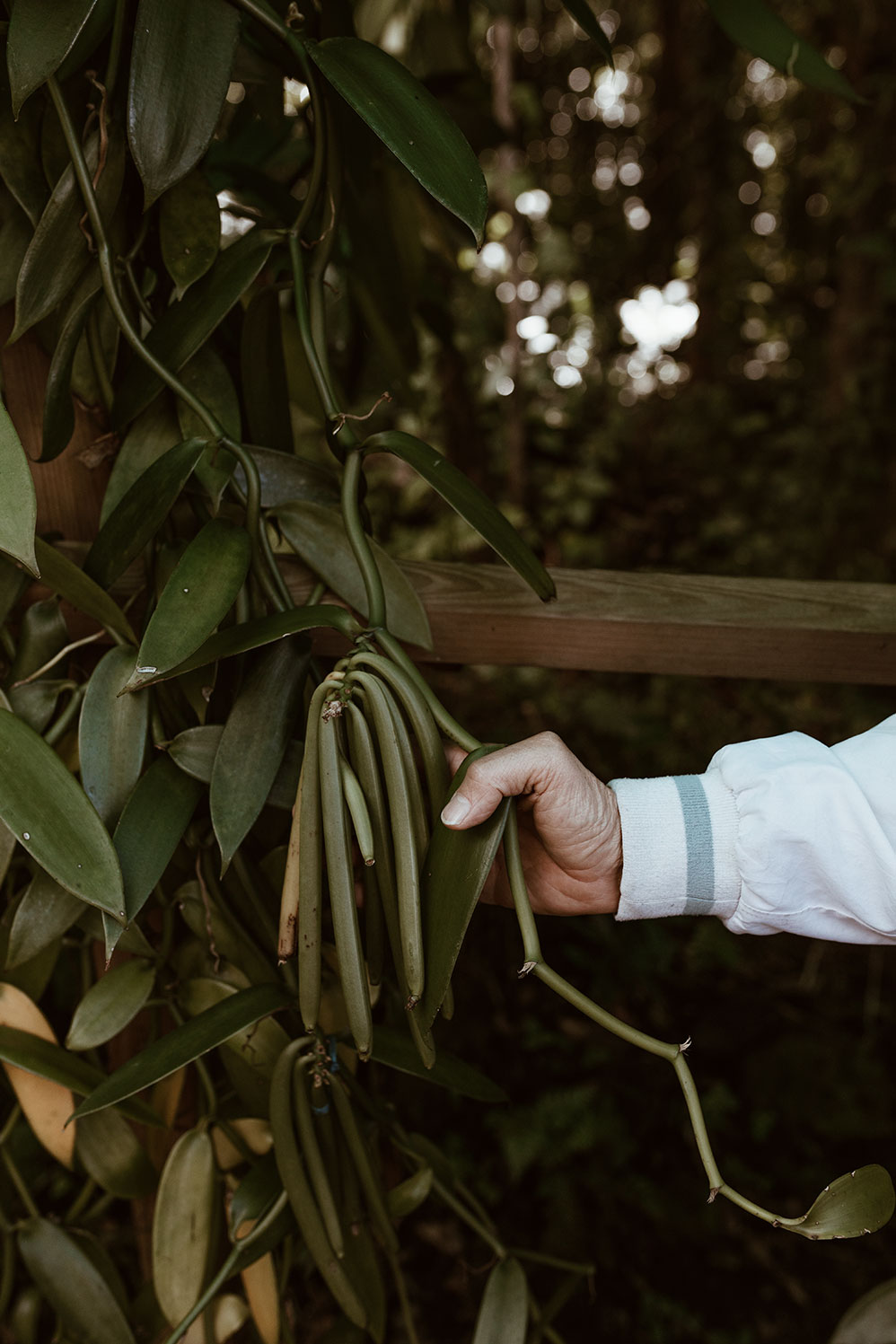
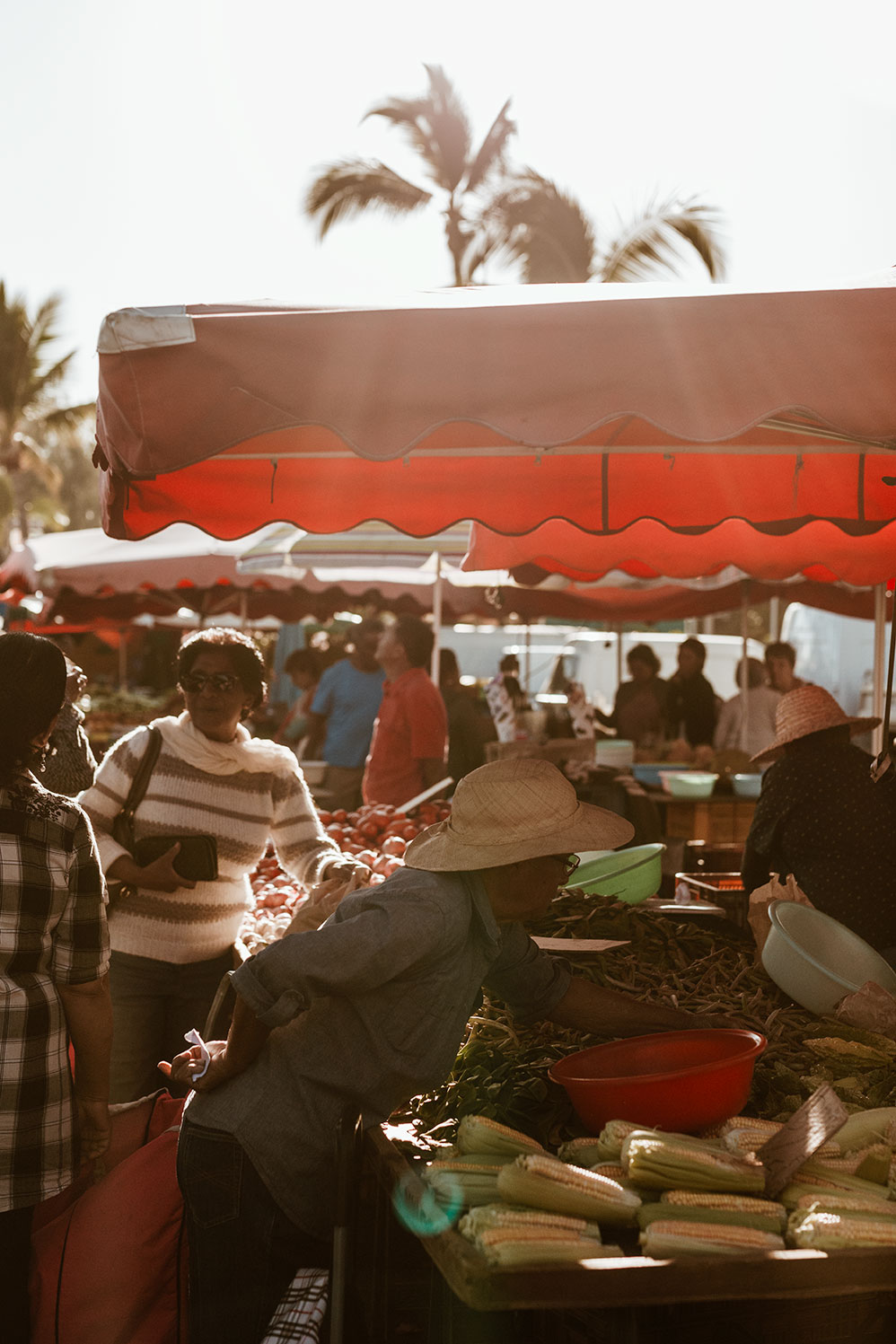
This cozy, relaxed family restaurant is serving a buffet lunch featuring the island’s traditional dishes. Besides a palm-heart salad, a wholesome casserole of plantain, and chouchou (a native pumpkin variety) and brèdes (local leafy greens) stew, the menu also includes cari, of course: a kind of curry and the island’s national dish, of which there are countless versions on Réunion. “Cari is made of rice and pulses, meat or fish, tomatoes and vegetables, for example. Plus onions, garlic, ginger, and herbs and spices, such as thyme, pepper, and turmeric,” according to Jean François.
Le Vieux Bardeau is located in the village of Bourg-Murat, and is therefore a convenient stop on the way to Piton de la Fournaise. The winding road climbs ever higher, until you reach the so-called Nez de Boeuf, a vantage point with a view of the tree-covered Rivière des Remparts ravine.
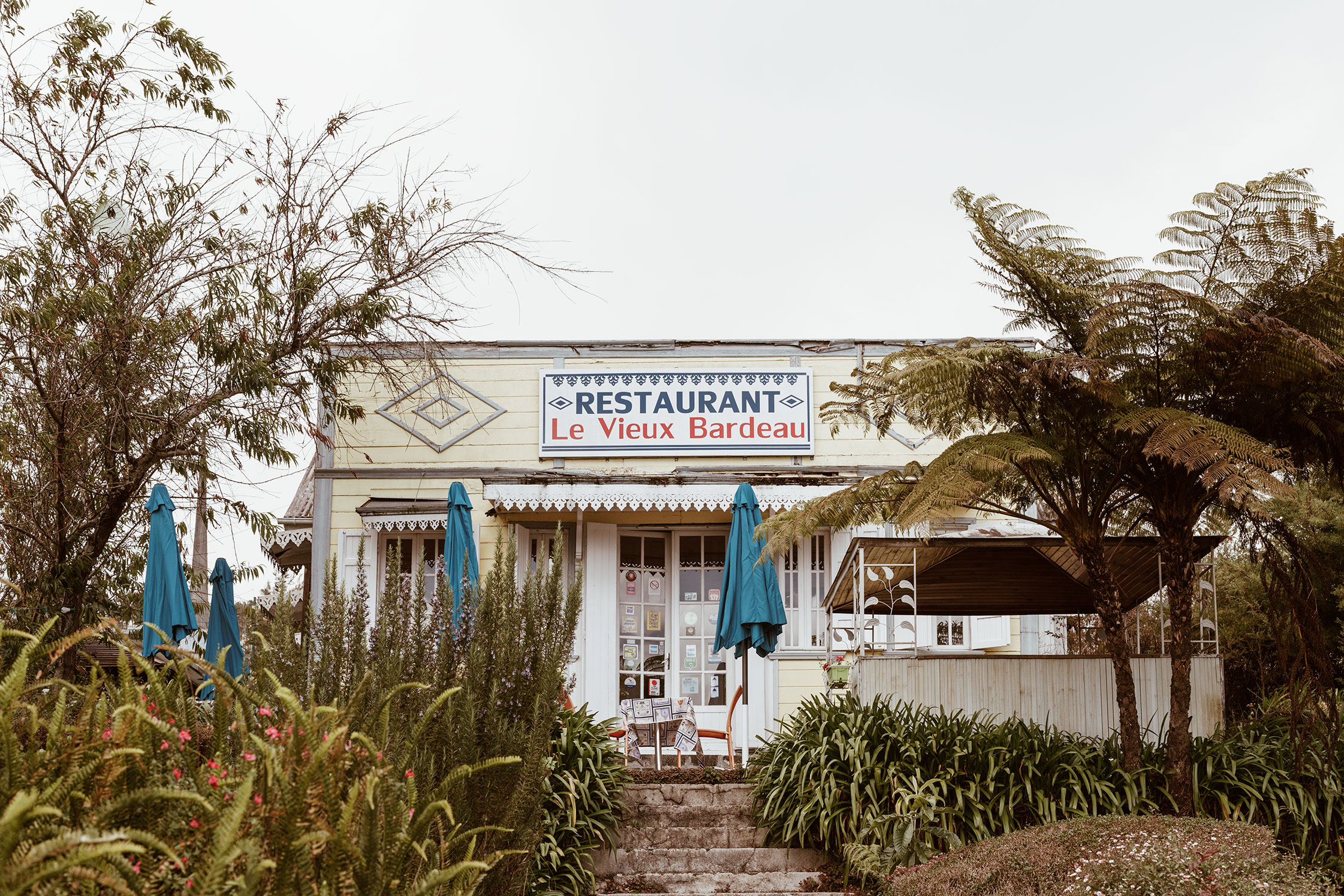
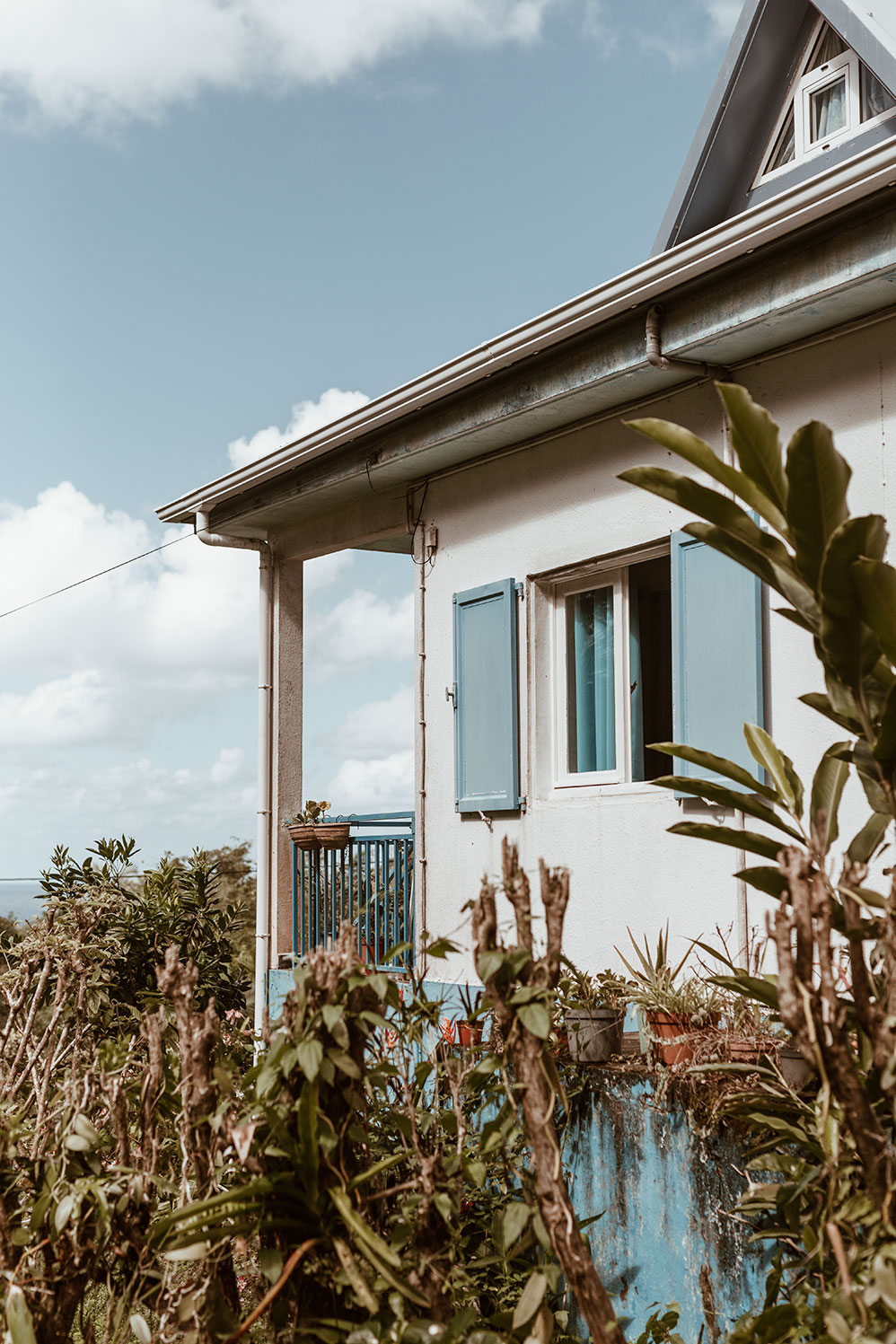
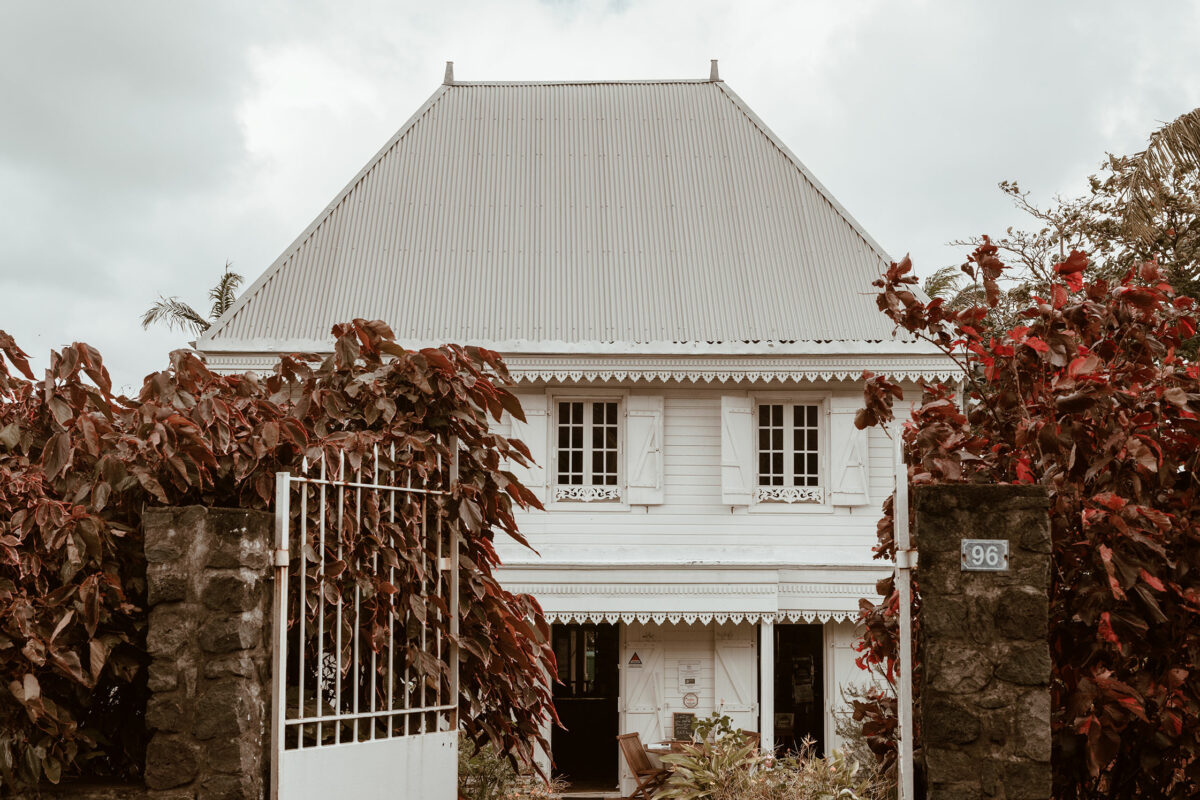
At times, the weather and vegetation on Réunion doesn’t change every few minutes, but rather every few meters. Amidst lush green mountain slopes and flowering plants, the surroundings become increasingly steppe-like, until the Plaine des Sables opens out over the last few meters, revealing a shimmering red, moon-like desert landscape “There are around 200 microclimate zones on Réunion,” explains Rolande. “That’s why the weather here is sometimes just as capricious as nature.” There is one advantage: rainbows. In unprecedented numbers.
Mother Nature actually appears more vibrant, fresh, agile, and somehow more youthful on Réunion than on other parts of the planet. And in actual fact, Réunion, whose Piton de Neiges rose out of the ocean barely 3 million years ago, is still a genuine fledgling in the planet’s 4.6-billion-year history. On top of that, Réunion’s vegetation is about as diverse as the island’s cuisine: next to a wide variety of endemic plants, the first settlers also introduced and cultivated plants from around the world. Vanilla, a type of orchid originally from Mexico, is perhaps the most popular example, playing a role in the fragrances and flavors of the island while also being a valuable export.
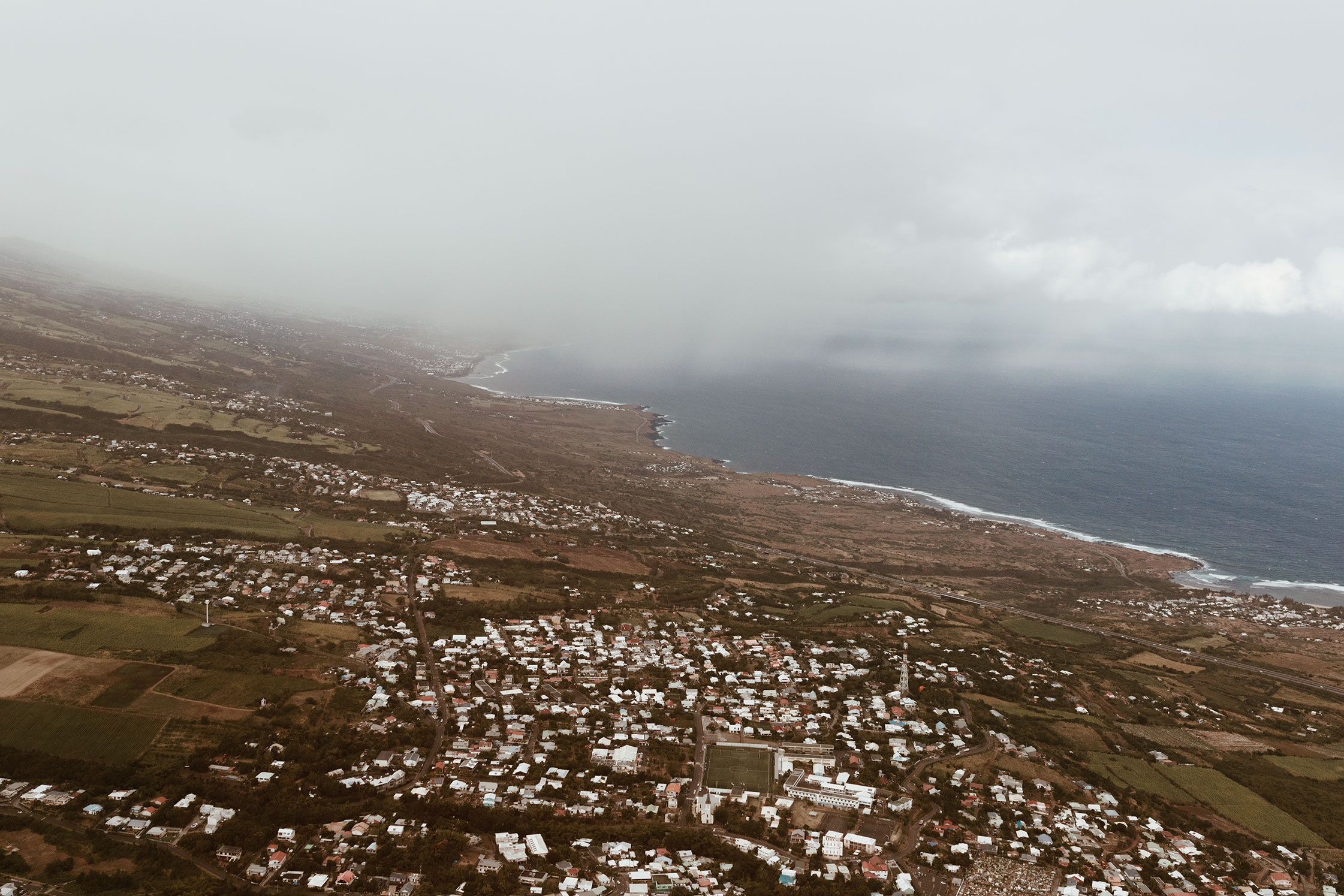
To learn more about the island’s plants and fragrances, a must-visit includes Marie-Rose Severin from Coopérative Agricole des Huiles Essentielles de Bourbon, or CAHEB, for short—a cooperative that produces the island’s essential oils in the town of Tampon. “The island’s smaller organic farms bring their harvests to us. We use what they give us to produce our sweet-smelling essences,” says the lady with the fitting floral name while in a small garden and boiler house that is used for steam distillation. The company supplies oils and essences to perfumers, including Marie Le Febvre from Paris, who runs the trendy fragrance brand Urban Scents from Berlin, and has also mixed one or two aromatic potions for the cooperative’s shop.
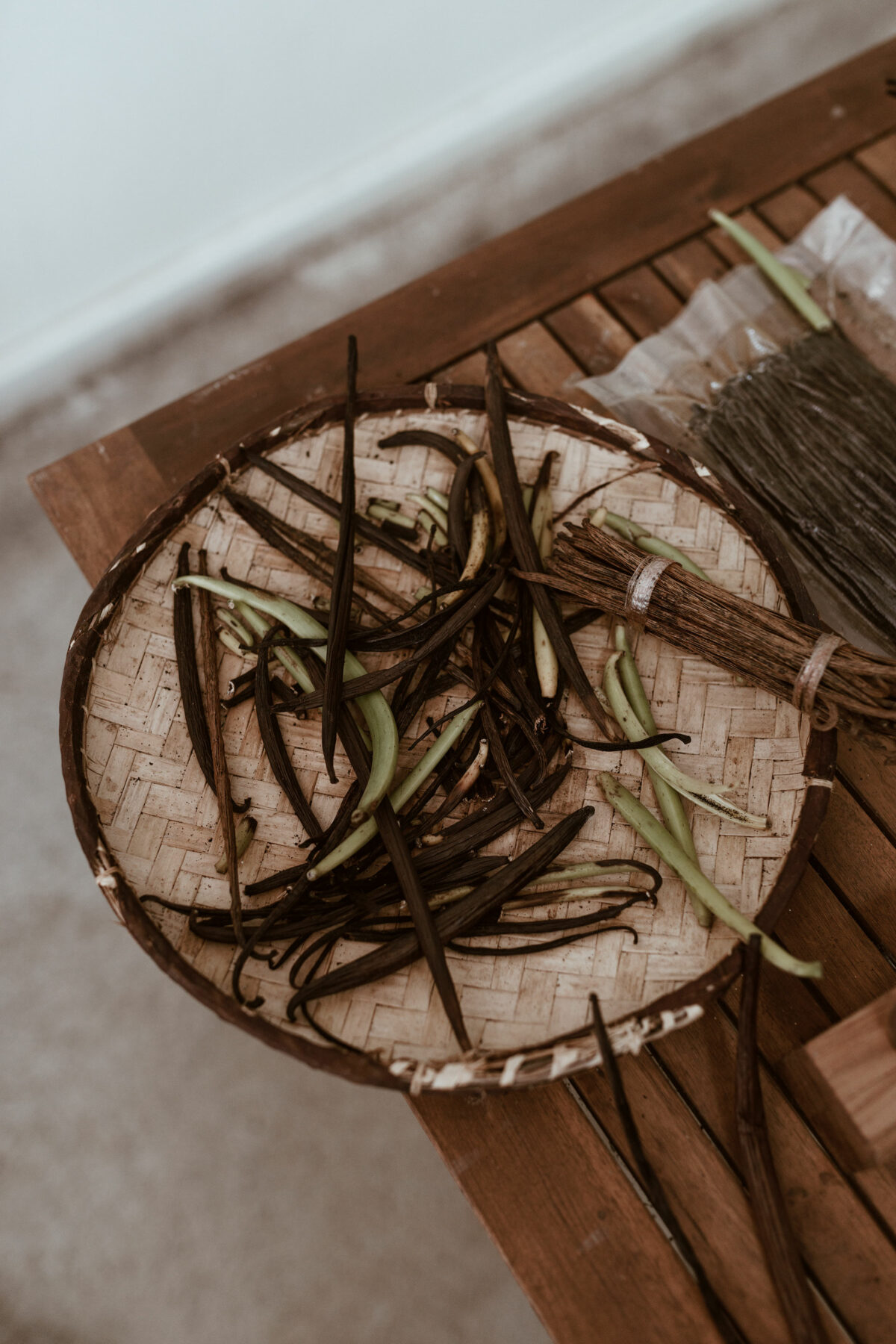
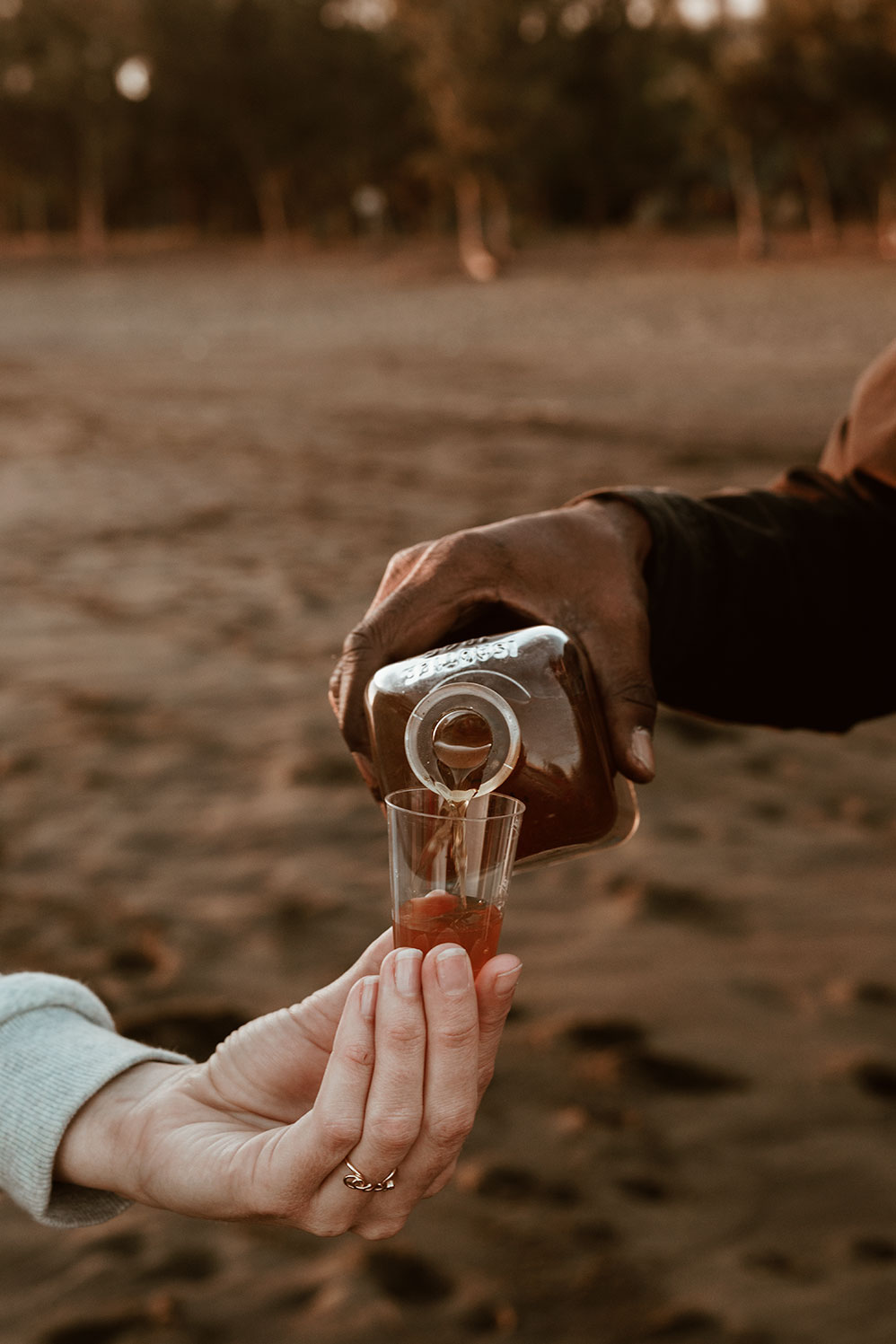
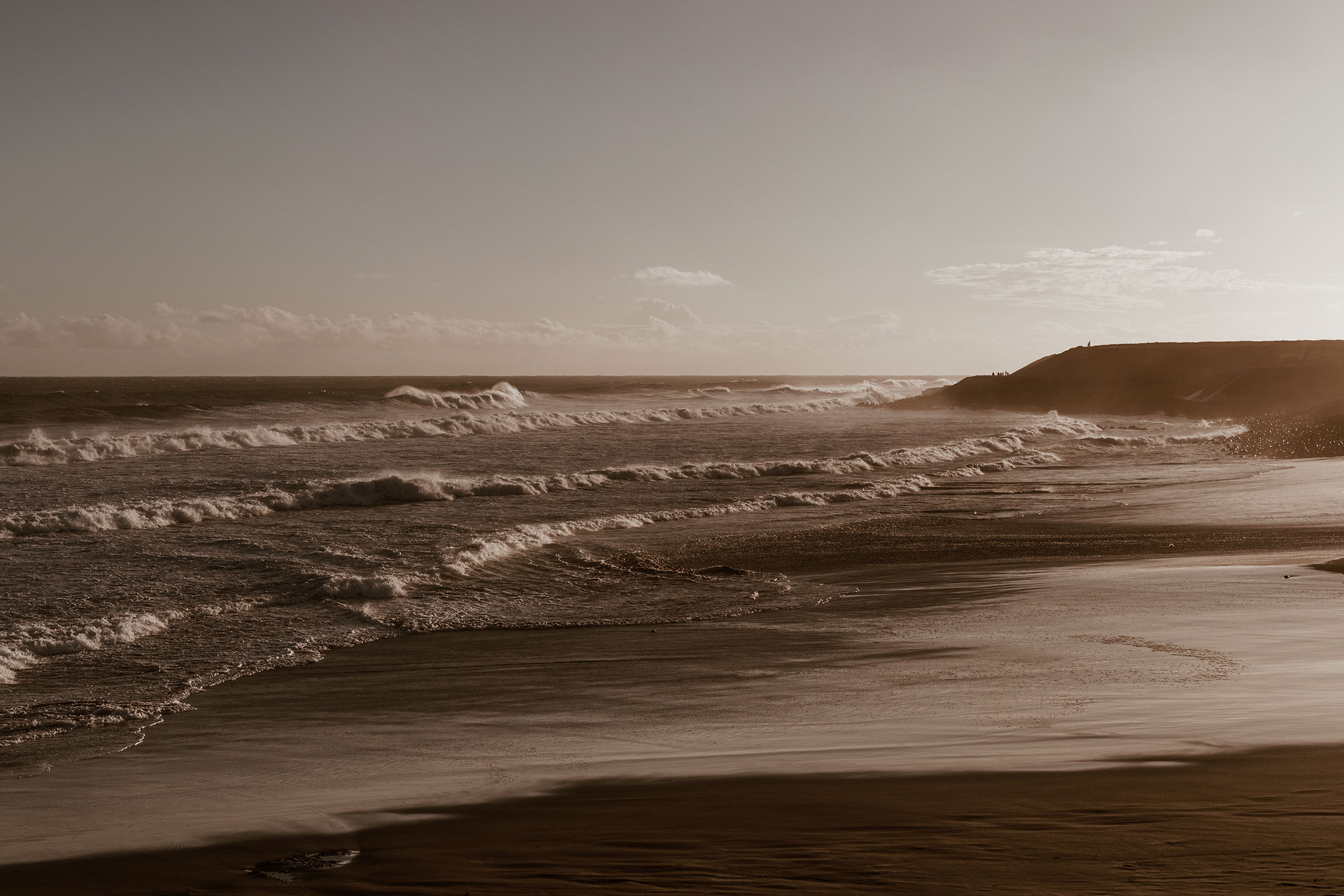
Rolande is now at the beach, at the plage de l’Étang-Salé, to be precise, which is famous for its black volcanic sand that conjures up a gloriously colorful backdrop at sunset. “You won’t see any locals here during the day,” she says. Because the dark black sand attracts the heat, you can easily burn your feet. For an evening, however, it’s the ideal place to listen to the sound of the sea while enjoying a cold Dodo, the local beer, or rhum arrangé, rum infused with herbs and fruit, considered to be a real speciality of the island. It tastes adventurously sweet, capriciously turbulent, and more than a little French. Like an exotic corner of France, in fact. In the middle of the Indian Ocean.
A curated list of locations in La Réunion
-
- 1 Escale Bleue Learn more about vanilla, its planting, and this company’s innovative method of processing vanille bleue. escale-bleue.fr
- 2 Le Vieux Bardeau Enjoy the taste of Creole cuisine in this down-to-earth comfort-food restaurant, where the island’s culinary specialties are served à la carte or as a buffet. facebook.com/Le-Vieux-Bardeau
- 3 Jardin Botanique Réunion has a huge variety of endemic plants as well as foreign species, which were introduced from all over the world. Discover them in Mascarin, the island’s botanical garden and conservatory. cbnm.org
- 4 Grand Bleu Croisières Enjoy whale watching on a boat tour with Grand Bleu. Their 90-minute croisière cocktail tour provides perfect sun-downer experience on the Indian Ocean. grandbleu.re
- 5 La Boutique de la CAHEB La Coopérative Agricole des Huiles Essentielles de Bourbon is the island’s cooperative for local essential oils. In their boutique, you can find special extracts such as the local ‘géranium bourbon’ and a variety of products, including perfumes and oils that can be used for both massage and cooking. geranium-bourbon.com
- 6 Marché de Saint-Paul Located on the waterfront, the multicolored Saint-Paul market includes 300 stalls for vegetables, crafts, and freshly made snacks. It is open all day on Friday, and on Saturday morning.
- 7 Helilagon Helicopters Experience the volcano and the hard-to-access basins from above on a helicopter trip around the island. helilagon.com
- 8 The Tour Guide Visit the Piton de la Fournaise, the basin of Salazie, and Réunion’s other treasures on a guided individual tour with Rolande, who will fill you in on what you need to know—and is fun company, too. [email protected]
- 9 Urban Scents No time to fly to the Indian Ocean? Paris-born, Berlin-based perfumer Marie Le Febvre fills bottles with the scent of La Réunion. For some of her perfumes, she uses the island’s precious ingredients, such as vetiver and vanilla. urbanscents.de
This story was originally published in Companion #14, a magazine produced in collaboration with 25Hours hotels. Find more Companion stories here. You can also find more FvF city guides here.
Text: Celina Plag
Photography: Ana Santl
